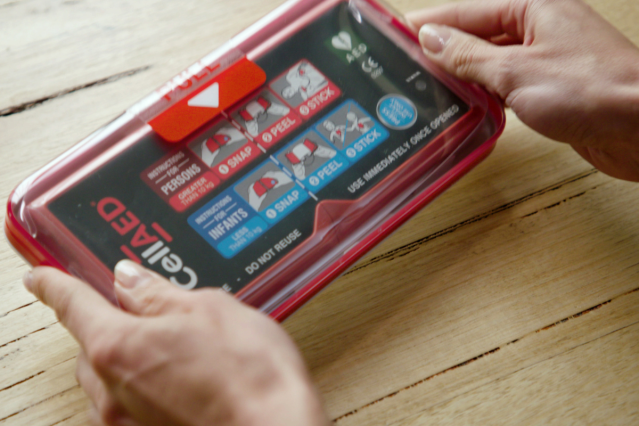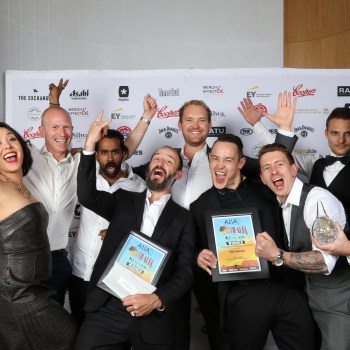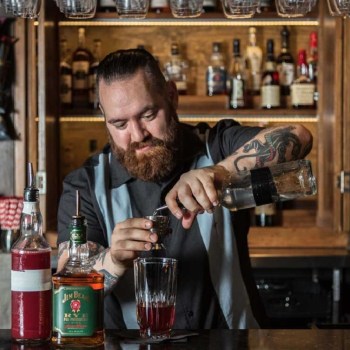For Luke Starr, Chief Communications Officer at defibrillator company CellAED, the stakes could not be higher.
“In Australia, you’re looking at 25,000 deaths [from sudden cardiac arrest] a year. Most of those happen in homes, but about 5,000 of those happen in public,” Luke says.
Although Luke doesn’t yet have specific details on how many of those deaths happen in hospitality venues, he told Bars and Clubs: “It would be a good proportion, because it’s where people congregate, and things like if people are drinking, or if they’re having a big meal, that sort of thing – the risk of a [sudden cardiac arrest] goes up.”
Of course, for venue operators and owners across Australia, the safety of both staff and patrons is of paramount importance, and it’s for this reason that they should seriously consider having a defibrillator at their business, Luke says.
“Essentially, a defibrillator means that you can be a first responder, and you can hopefully buy time to save that person’s life,” Luke says.
While ‘buying time’ might seem trivial on the face of it, Luke explains that with sudden cardiac arrest, it can be the difference between life and death.
“The whole point of it is to buy time, because for every minute without treatment, your chances of surviving a sudden cardiac arrest decreases by 10 per cent.”
Luke also believes it’s important for operators and staff to understand the differences between a heart attack, and a sudden cardiac arrest.
“They’re interchangeable terms for most people, but they’re different things. So heart attack is when usually you’ve got a plumbing problem with your heart, and you’ll get warnings – like you’ll get the sharp pain on your side, you’ll have those symptoms where you think – ‘Oh, you know, maybe something’s going wrong with my chest and my heart,’” Luke says.
“With a sudden cardiac arrest – you’re not conscious. And the first word is true. You just drop, because your heart will all of a sudden, stop pumping normally.”

Recognise the signs
Even before using a defibrillator, it’s crucial that staff are able to recognise the signs that someone is in sudden cardiac arrest. One of the key factors in survivability is the presence of other people, who are able to understand and calmly intervene.
“One of the great things about say, a venue, is your chances of having at least one person know what’s going on, it’s a lot higher,” Luke explains.
Luke gives an example from CellAED’s own staff.
“Our spokesperson in the UK is a guy in his mid-20s, his name’s Ben Cole. And in his late teens, he was working in a restaurant and he collapsed. And the chef knew what was going on, and he grabbed the defibrillator and saved Ben’s life,” Luke says.
“Ben had an underlying heart condition he didn’t know about until his heart stopped. That’s very often the case.”
And there is practical training that can be offered to operators and hospitality professionals, as Luke illustrates, saying: “There’s something called the Sudden Cardiac Arrest Chain of Survival.”
The Chain of Survival has been developed by cardiologist and Master of Surgery, Mary M. Newman. The idea is to take steps that, when performed in order, will maximise the chance of survival. Luke provides more detail.
“It’s something that you would learn in first aid training. But being able to firstly recognise a sudden cardiac arrest so if somebody drops, they’re unresponsive and they’re not breathing normally so they could be gasping. They could be making cracking sounds, they might not be breathing at all. Chances are that they’ve experienced a sudden cardiac arrest.
“The next step is immediately called Triple Zero call for help. So call for help and start quality CPR. But really, it is those rapid chest compressions to the beat of staying alive by the Bee Gees. And making sure that the chest is returning to its position after every compression. And then the fourth step in the chain of survival is applying a defibrillator.”
Simplify the process
It’s with this last step that CellAED hopes to make a difference. Luke outlines the key points of difference between the CellAED device, and other more conventional defibrillators.
“We have this device, which is instead of being the size of a small backpack, is the size of a block of chocolate. And It’s significantly cheaper, so instead of having to pay $1,000 or more for your defibrillator in Australia, you’re paying $359,” Luke continues.
A ‘Netflix-style’ subscription is also available to venues, so they can pay a monthly fee, and then have defibrillators replaced as used.
“They’ve completely redesigned the way a defibrillator is constructed. They’ve managed to get it to the point where it’s much smaller, it’s much faster to deploy.”
With traditional defibrillators, Luke says, which have to be charged and maintained, and require greater assembly – costing precious time during emergency use.
“This [CellAED] device is all in one unit – so you basically snap it, along the middle, you peel of the backing and then you stick it to the bare chest in the position shown on the device. And from there it does everything an AED [automated external defibrillator] does.
“It wakes up and starts giving voice prompts on how to perform CPR, to place the pads on the chest, and to stand back if a shock is required, it will automatically scan the heart and see what’s going on, and determine if shock is going to get [the heart] back to its normal rhythm,” Luke adds.
“And the other point of difference with this device is that it is also a fully connected device. [CellAED] connects to any mobile signalling range, and it can be discovered, it can be monitored remotely to make sure that it’s healthy, that it’s ready to go.
Most importantly, this allows the device to connect with healthcare professionals after usage.
“After an event, it will automatically communicate the event data, so the ECG [electrocardiogram] strip, the visualisation of what happened during that sudden cardiac monitoring period, it will communicate that back up to the cloud where it can be accessed by clinicians.”
Luke also highlighted changes in legislation that could see defibrillators become a legal necessity, rather than a nice-to-have.
“One thing I would recommend is to take a look at the legislation that’s just been passed in South Australia. That legislation – there aren’t many places in the world that have introduced legislation like that – it’s basically mandating defibrillators for all government-run buildings,” Luke says.
The same legislation will mandate defibrillators for commercial buildings over 1200 metres squared. Under this bill, the private sector will have three years to roll out the devices.
Ultimately though, for Luke, this is not a matter of legal requirement, but of simply doing the right thing to save lives.
“It’s a chance for staff to become – there’s no other way to say it – to become heroes. To actually save the life of a patron or fellow staff,” he concludes.




